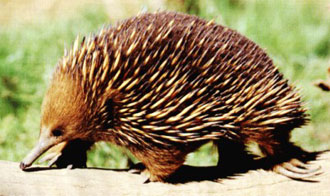Another year has arrived, with that, another Action Project too. My first sophomore project for unit one was to choose an animal from a list, to then research it and create a project about it. The main purpose is to practice taxonomy, which is how creatures are scientifically classified (such as the kingdom animalia, or how a Canis Familiaris is the genus and species for a dog) and goes by the assessment of;
- Kingdom
- Phylum
- Class
- Order
- Family
- Genus
- Species
This is how animals are now categorized today, but there was once a time in which the only way to do this was by just looking at them. Before modern taxonomy, we used a comparison of phenotypes (or physical traits) to identify any relations, yet this wasn't the most effective method... If bugs and birds both have wings, would that make them the same? That's why the modern version is much more accurate, because back then, we couldn't look at a single hair, feather, or scale, and determine what animal it currently is. Analyzing genotypes makes the classification all the better, because if you have an exotic short hair (cat) and your top of the line lion, by appearance you probably wouldn't expect them to be related.
Throughout the project, I'm proud of my collage, especially considering all the spiky spines and quills on an echidna. Yet I learned many interesting facts that I hadn't already known before, like the fact that echidnas can lay eggs, indigenous to Australia, and that their... ahem, reproductive organ for the males has... one shaft and four heads. Why is that so? I really can't even fathom, but it's there...
Below, you may find the full report, which contains this information, and more.
_________________________________________________________________________________
The echidna, it has quills, it has claws, it lays eggs, and it rolls up into a ball. So what exactly is an echidna? Well there’s a special way to determine this using a method that scientists use all the time, taxonomy. Taxonomy is how we genetically list things to identify who’s related to what and so on. General taxonomy goes by a categorization of; Kingdom, Phylum, Class, Order, Family, Genus, and Species (scientific names of creatures is the genus then the species, such as canis familiaris for a dog). An echidna is an odd animal, in the kingdom animalia, it does indeed have a spine, which makes its phylum chordata. In a more in depth visual, I have here a table representing an echidna’s taxonomy.
Taxonomic Level
|
Your organism’s group
|
Key characteristics of group
|
Kingdom
|
Animalia
|
It’s multicellular
|
Phylum
|
Chordata
|
It has a spine
|
Class
|
Mamalia
|
It has warm blood (and fur)
|
Order
|
Monotremata
|
It lays eggs (and has a pouch)
|
Family
|
*Tachyglossidae
|
It has quills
|
Genus
|
*Tachyglossidae
|
Classification for echidna
|
Species
|
*Tachyglossidae
|
Classification for echidna
|
*only results for those criteria of an echidna
Oddly enough, as if an egg laying marsupial wasn’t strange enough already, tachyglossidae is the only classification for the categories of family, genus, and species. In the evolutionary line, an echidna was determined to have split from a platypus from around 19-48 million years ago. Though the borrowing *spiny anteater may be unique as it is, I’ve compared it to 2 other organisms; and potoo bird and an axolotl.
On the left is a venn diagram of the three creatures and the other picture is of an echidna. Similarities between an echidna and a potoo bird include the fact that both have lungs, claws, and are insectivores (a diet of bugs and insects). Between the three, they all come in brown, lay eggs, and are animals with a spine. Echidnas and axolotls have nothing in common when it comes to just those two.
Another representation for the echidnas, whom of which are indigenous to Australia, is through math. Yes, math can be used, as it is commonly used anyway, to represent taxonomy in a different manner. The follower are terms used to describe an echidna and will have an explanation underneath it.
Echidna e U {mammals}
Echidna is an element of the “universe” which currently consists of mammals.
{Dogs, Weasels, Dolphins, and Humans} n U
Other animals in the “U” of mammals include dogs, weasels, and dolphins.
Echidna≠{reptiles}
Echidnas are not in the set of reptiles.
Echidna e {marsupial, quadruped}
Two other defining elements are the fact that an echidna is a marsupial and a quadraped.
V=echidna X=chordata B=Amphibian
V U X = {echidna, potoo bird, axolotl}
An echidna is in unity with chordata, as well as potoo birds and axolotls.
V (is not an element)≠ B
Yet an echidna is not an element of an amphibian.
Overall, this concludes the report on the fascinating echidna, I hope you enjoyed learning more about this truly intriguing ani-- hm? What’s this… I seemed to have left out some *extra* information. Well there is of course no time like the present, so when it comes to reproduction, the females lay eggs, these eggs will hatch inside of the pouch that the mothers have. As of the male, their reproductive organ consists of one shaft, like most mammals, but 4 heads. The purpose of this has still yet to be clarified, but it is present, so take that as another, possibly useful, piece of information revolving around the echidna.
No comments:
Post a Comment